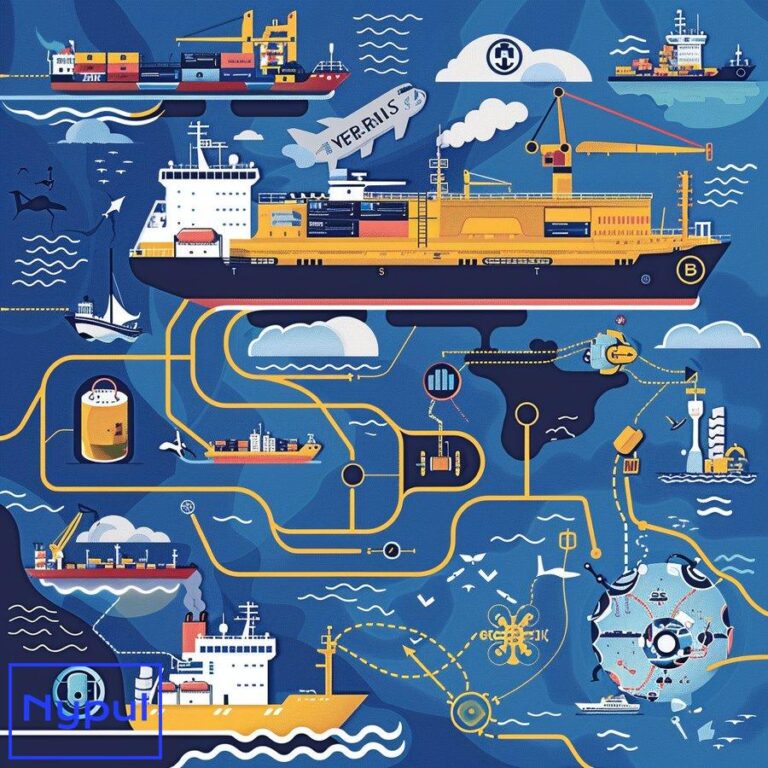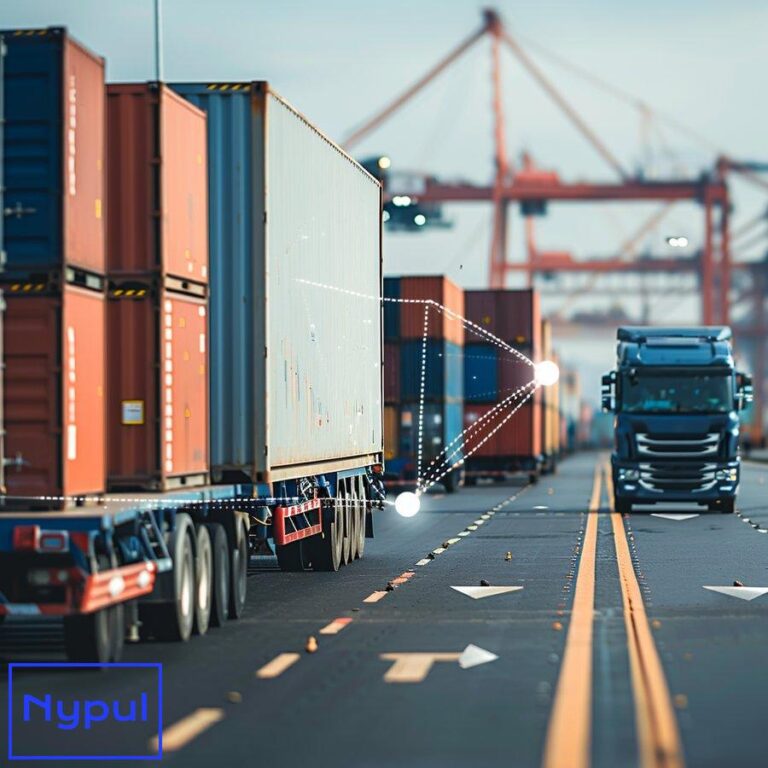Why Is Drayage Important
What is Drayage and Why is it Essential?
Drayage is the transportation of goods over a short distance, typically from a port or rail terminal to a warehouse or distribution center. It is a crucial component of the logistics industry, as it enables the smooth flow of goods between different modes of transportation.
The term “drayage” originated in the 1800s, when horse-drawn carts called “drays” were used to transport goods from ports and rail terminals to nearby warehouses. Today, drayage is performed by trucks, but the concept remains the same: moving goods over short distances as part of a larger supply chain.

Drayage is essential because it bridges the gap between long-haul transportation and the final destination of goods. Without drayage, containers would pile up at ports and rail terminals, causing congestion and delays. By efficiently moving goods to the next stage of their journey, drayage helps to keep the supply chain running smoothly.
Drayage plays a vital role in several key areas of logistics:
- Intermodal transportation: Drayage connects different modes of transportation, such as ships, trains, and trucks, allowing goods to be moved seamlessly from one to another.
- Port operations: Drayage is critical for moving containers from ships to trucks or trains, preventing port congestion and ensuring the timely delivery of goods.
- Warehousing and distribution: Drayage transports goods from ports and rail terminals to warehouses and distribution centers, where they can be stored or prepared for final delivery.
In summary, drayage is an essential link in the logistics chain, enabling the efficient movement of goods over short distances and connecting different modes of transportation. Without drayage, the global supply chain would grind to a halt.
How Does Drayage Fit into the Supply Chain?
Drayage is an integral part of the supply chain, serving as a critical link between long-haul transportation and the final destination of goods. It is often referred to as the “first mile” or “last mile” of the supply chain, depending on whether goods are being moved from a port or rail terminal to a warehouse (first mile) or from a warehouse to the final destination (last mile).
To understand how drayage fits into the supply chain, let’s consider a typical scenario:

- A container ship arrives at a port, carrying goods from overseas.
- The containers are unloaded from the ship and staged at the port.
- Drayage trucks pick up the containers and transport them to a nearby warehouse or distribution center.
- At the warehouse, the goods are unloaded, sorted, and prepared for final delivery.
- Drayage trucks then transport the goods to their final destination, such as a retail store or customer’s home.
In this scenario, drayage plays a crucial role in steps 3 and 5, moving goods from the port to the warehouse and then from the warehouse to the final destination.
Drayage is essential for the smooth functioning of the supply chain because it:
- Prevents congestion: By quickly moving containers from ports and rail terminals, drayage prevents congestion and keeps the supply chain moving.
- Enables intermodal transportation: Drayage allows goods to be transferred between different modes of transportation, such as ships, trains, and trucks, enabling the efficient movement of goods over long distances.
- Facilitates timely delivery: Drayage ensures that goods are delivered to their final destination on time, meeting customer expectations and keeping the supply chain running smoothly.
Without drayage, the supply chain would experience significant bottlenecks and delays, as goods would pile up at ports and rail terminals. By providing a critical link between long-haul transportation and final delivery, drayage helps to keep the supply chain running efficiently and effectively.
What is the Economic Impact of Drayage on Logistics?
Drayage has a significant economic impact on the logistics industry, as it is a critical component of the supply chain and enables the efficient movement of goods. The cost of drayage services can vary depending on factors such as distance, cargo type, and market conditions, but it typically accounts for a significant portion of overall transportation costs.

The economic impact of drayage can be seen in several key areas:
-
Port operations: Drayage is essential for the efficient operation of ports, as it enables the quick movement of containers from ships to trucks or trains. Delays in drayage can lead to port congestion, which can have a ripple effect throughout the supply chain, causing delays and increasing costs.
-
Intermodal transportation: Drayage plays a crucial role in intermodal transportation, enabling the seamless transfer of goods between different modes of transportation. This allows for the efficient movement of goods over long distances, reducing transportation costs and improving supply chain efficiency.
-
Warehousing and distribution: Drayage is essential for the timely delivery of goods to warehouses and distribution centers, where they can be stored or prepared for final delivery. Delays in drayage can lead to stockouts and lost sales, negatively impacting businesses.
-
E-commerce: The growth of e-commerce has increased the demand for drayage services, as more goods are being shipped directly to consumers. Drayage is critical for the timely delivery of e-commerce orders, which can have a significant impact on customer satisfaction and loyalty.
To illustrate the economic impact of drayage, consider the following statistics:
| Statistic | Value |
|---|---|
| Annual drayage movements in North America | 60 million |
| Drayage share of total transportation costs | 40-50% |
| Cost of port congestion (per day) | $100 million |
| E-commerce sales in the US (2020) | $791.7 billion |
These statistics demonstrate the significant economic impact of drayage on the logistics industry. With millions of drayage movements each year and a significant share of transportation costs, drayage is a critical component of the supply chain. Delays or inefficiencies in drayage can lead to significant costs, such as port congestion, while the growth of e-commerce has increased the demand for drayage services.
In summary, drayage has a substantial economic impact on the logistics industry, enabling the efficient movement of goods and supporting key areas such as port operations, intermodal transportation, warehousing, and e-commerce. As the global economy continues to grow and evolve, the importance of drayage is likely to increase, making it a critical focus for businesses and logistics providers alike.
What Challenges Does the Drayage Industry Face?
![]()
The drayage industry faces several significant challenges that can impact the efficiency and effectiveness of logistics operations. These challenges can lead to delays, increased costs, and reduced customer satisfaction, making it essential for businesses and logistics providers to understand and address them.
Equipment Shortages
One of the primary challenges facing the drayage industry is a shortage of equipment, particularly chassis. Chassis are the trailers that are used to transport containers over the road, and a shortage of chassis can lead to delays and increased costs. This shortage can be caused by several factors, including:
- Increased demand for drayage services, particularly in high-volume ports
- Aging chassis fleets that require frequent maintenance and repair
- Inefficient chassis pooling and management practices
To address this challenge, some ports and logistics providers have implemented chassis pools, where chassis are shared among multiple users to increase utilization and reduce shortages. Additionally, some companies have invested in their own chassis fleets to ensure a reliable supply of equipment.
Port Congestion
Port congestion is another significant challenge facing the drayage industry. When ports become congested, it can lead to delays in the movement of containers, increased costs, and reduced efficiency. Port congestion can be caused by several factors, including:
- Increased cargo volumes, particularly during peak shipping seasons
- Limited infrastructure and capacity at ports
- Labor shortages or disputes
- Weather-related disruptions
To address port congestion, some ports have implemented appointment systems for drayage trucks, which can help to manage traffic flow and reduce delays. Additionally, some ports have invested in infrastructure improvements, such as additional cranes and storage facilities, to increase capacity and efficiency.
Environmental Impact
The environmental impact of drayage operations is another challenge facing the industry. Drayage trucks are often older and less efficient than long-haul trucks, and they can contribute to air pollution and greenhouse gas emissions. This is particularly true in port cities, where drayage trucks are concentrated and can have a significant impact on local air quality.
To address this challenge, some ports and logistics providers have implemented clean truck programs, which incentivize the use of newer, cleaner trucks. Additionally, some companies have invested in alternative fuel vehicles, such as electric or natural gas trucks, to reduce emissions and improve sustainability.
Driver Shortages
Finally, driver shortages are a significant challenge facing the drayage industry. Drayage driving can be a challenging and demanding job, with long hours and frequent delays. This can make it difficult to attract and retain qualified drivers, leading to shortages and increased costs.
To address this challenge, some companies have implemented driver retention programs, which offer competitive pay and benefits, as well as opportunities for career advancement. Additionally, some companies have invested in technology solutions, such as GPS tracking and automated dispatching, to improve driver efficiency and reduce delays.
In summary, the drayage industry faces several significant challenges, including equipment shortages, port congestion, environmental impact, and driver shortages. Addressing these challenges requires a combination of infrastructure investments, operational improvements, and technology solutions. By working together to overcome these challenges, businesses and logistics providers can improve the efficiency and effectiveness of drayage operations, ultimately benefiting the entire supply chain.
How is Technology Transforming Drayage Services?
Technology is transforming the drayage industry, enabling logistics providers to improve efficiency, reduce costs, and enhance customer service. From automation and artificial intelligence to real-time tracking and predictive analytics, technology is revolutionizing the way drayage services are delivered and managed.
Automation and Artificial Intelligence
Automation and artificial intelligence (AI) are two of the most significant technological advancements transforming the drayage industry. Automation can help to streamline processes, reduce errors, and improve efficiency, while AI can enable more accurate forecasting, optimized routing, and improved decision-making.
Examples of automation and AI in drayage include:
- Automated dispatching: Automated dispatching systems can optimize truck routes and schedules based on real-time data, reducing delays and improving efficiency.
- Predictive maintenance: AI-powered predictive maintenance systems can analyze data from truck sensors to identify potential equipment failures before they occur, reducing downtime and maintenance costs.
- Intelligent cargo matching: AI algorithms can analyze data on cargo volumes, truck capacity, and other factors to optimize cargo matching and reduce empty miles.
By leveraging automation and AI, drayage providers can improve operational efficiency, reduce costs, and enhance customer service.
Real-Time Tracking and Visibility
Real-time tracking and visibility are another key area where technology is transforming the drayage industry. With GPS tracking and other technologies, drayage providers can monitor the location and status of trucks and containers in real-time, providing customers with up-to-date information on their shipments.
Benefits of real-time tracking and visibility include:
- Improved customer service: Real-time tracking enables customers to monitor the status of their shipments and receive proactive updates on any delays or issues.
- Enhanced security: Real-time tracking can help to prevent cargo theft and other security incidents by enabling quick detection and response.
- Optimized operations: Real-time data on truck locations and container movements can help drayage providers to optimize routes, reduce delays, and improve overall efficiency.
By providing real-time tracking and visibility, drayage providers can improve customer satisfaction, enhance security, and optimize their operations.
Blockchain and Smart Contracts
Blockchain and smart contracts are emerging technologies that have the potential to transform the drayage industry. Blockchain is a distributed ledger technology that enables secure, transparent, and tamper-proof record-keeping, while smart contracts are self-executing contracts with the terms of the agreement directly written into code.
Potential applications of blockchain and smart contracts in drayage include:
- Automated payments: Smart contracts can enable automated payments between drayage providers and customers, reducing payment processing times and costs.
- Enhanced transparency: Blockchain can provide a transparent and immutable record of all transactions and movements in the drayage process, improving accountability and reducing disputes.
- Improved data sharing: Blockchain can enable secure and efficient data sharing between drayage providers, customers, and other stakeholders, improving collaboration and reducing inefficiencies.
While blockchain and smart contracts are still in the early stages of adoption in the drayage industry, they have the potential to significantly transform the way drayage services are delivered and managed.
In summary, technology is transforming the drayage industry in significant ways, from automation and AI to real-time tracking and blockchain. By leveraging these technologies, drayage providers can improve efficiency, reduce costs, enhance customer service, and ultimately drive growth and success in an increasingly competitive and dynamic market.




